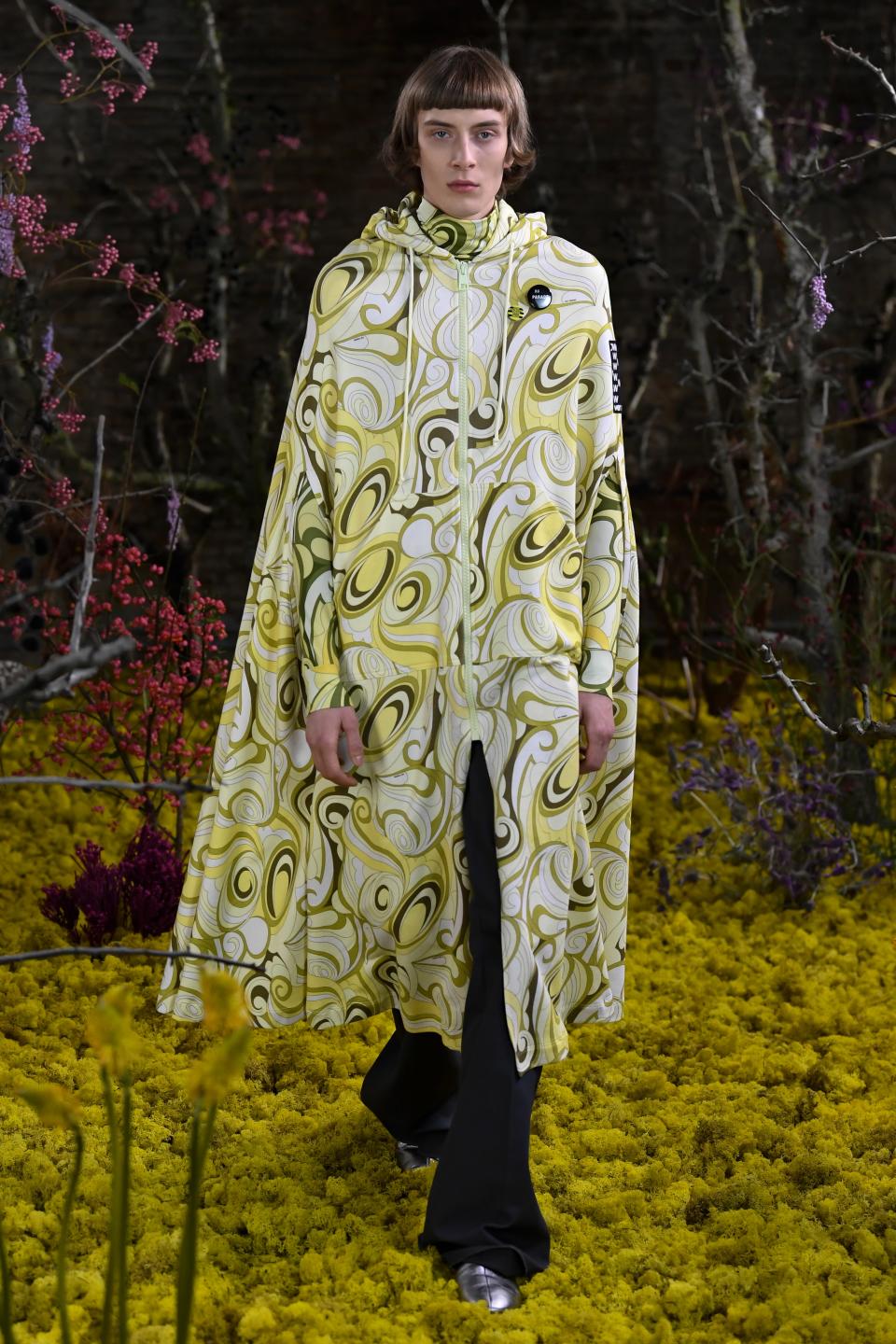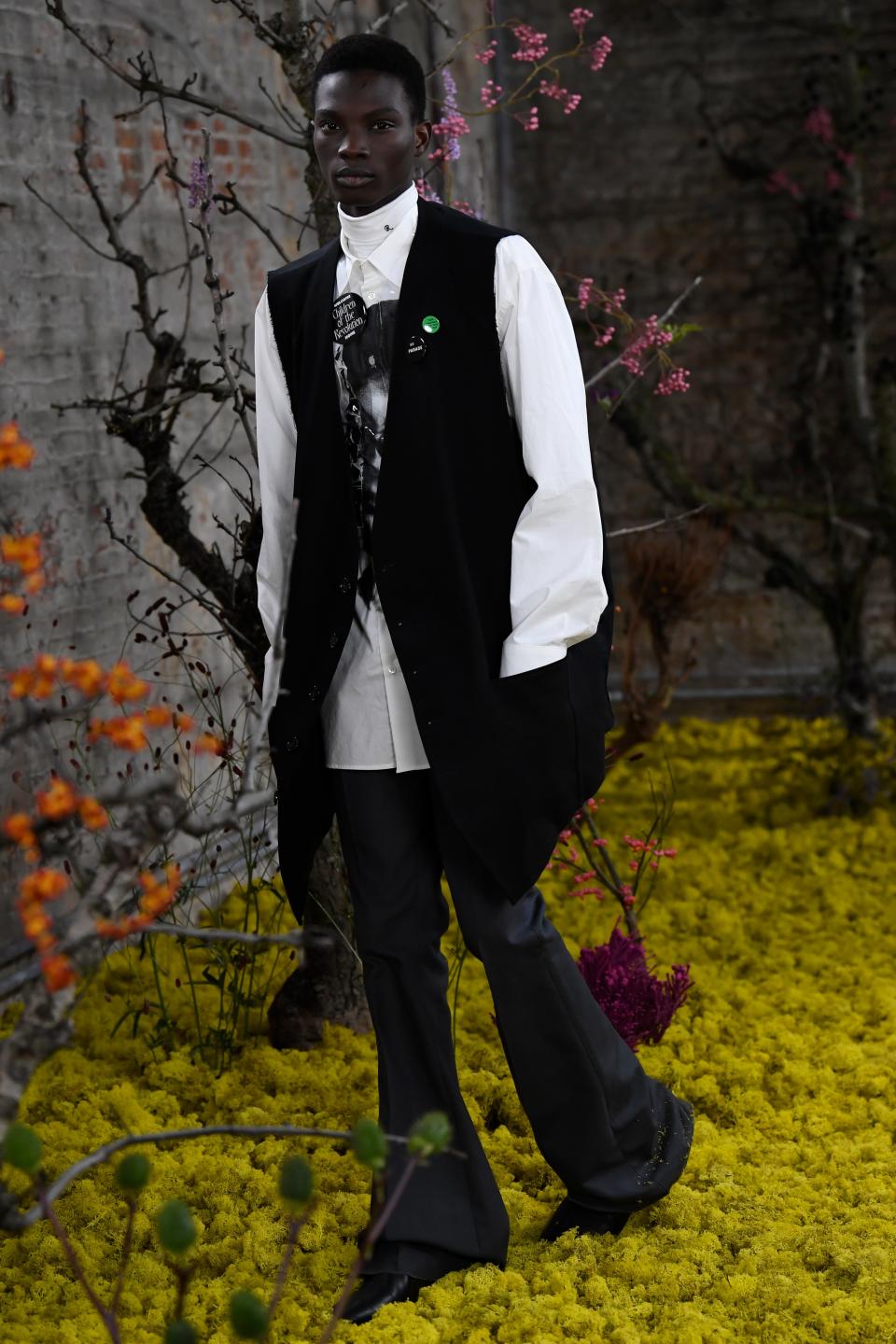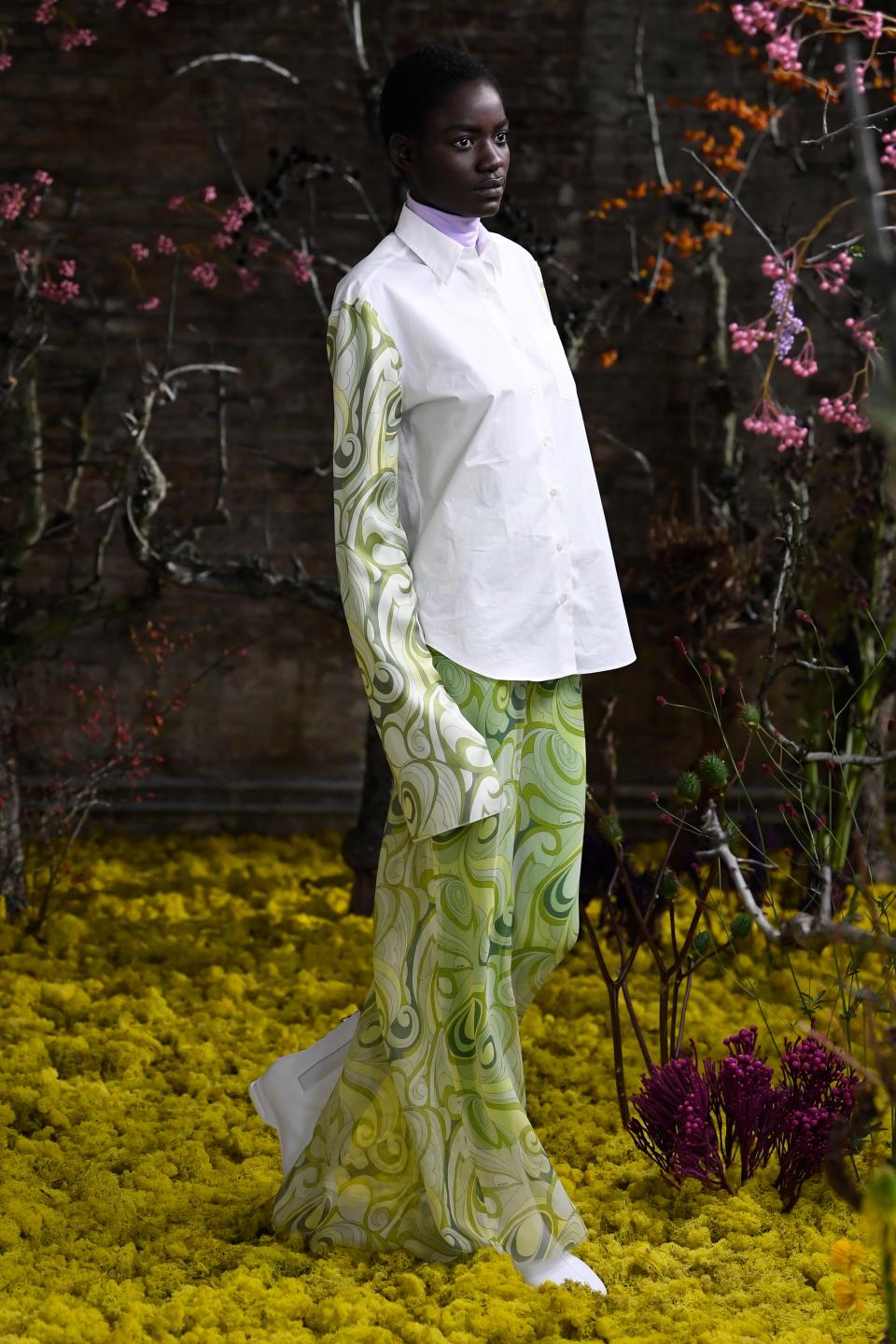Raf Simons Throws a Flower Power Reckoning
Raf Simons might be one of fashion’s best opinionators—tossing off commentary on the commercialization of fashion at the expense of creativity, and the new generation of designers who, like, Simons, take inspiration from the youth—but he is not actually a man of many words. After dropping a moody short film (his directorial debut!) to present his Spring 2021 collection, his team circulated a version of the typical show notes: instead of an essay about ideas or references, it was simply a list of films, from flower power canon cinema like Hair, Zabriskie Point, and Alice In Wonderland, to horror classics about endangered teens and domestic destruction like The People Under the Stairs, Picnic at Hanging Rock, A Nightmare on Elm Street, and Scream. At last! A fashion collection that asks, “DO YOU LIKE SCARY MOVIES?”
The video presentation was itself a scary movie: men and women—this collection featured Simons’s first stab at womenswear under his eponymous label—crawling out of a hole on their hands and knees and wading through a field of yellow stuff. Elsewhere, models draped themselves in huge mesh hammocks, like a spider’s web, and crowded around a window letting each other in, all in slo-mo. Finding refuge—and finding it slightly disturbing—seemed to be the mood.

The shapes in this collection were fantastic. The flower power theme led Simons to sensual silhouettes: long sleeveless coats over bellbottoms, bishop-sleeve blouses, and a number of long hoodie cloaks. His swirling graphic prints and clingy tattoo tops (the lowkey must-have fashion piece of the year) were spunky new territory. The clothes struck me as industrialized takes on the Romantic, fluid shapes of London designer Michael Fish, or Mr. Fish, whose psychedelic Renaissance garments were beloved by Mick Jagger and David Bowie. There were also a lot of the old Simons signatures: the plastic-wrap bodice; the appliqued photos by longtime Simons graphic collaborator Peter de Potter; and myriad references to youth culture, like turtlenecks that read, “Children of the Revolution” and buttons in a ’70s horror font beckoning you to “JOIN US.” As for the womenswear: many women are already wearing the brand. I suspect most Simons customers will pull from both sides of the rack, though it would be awesome to see a celebrity like Millie Bobby Brown or Laura Dern wear the black velvet gown with mylar buttons lining the scoop neck like a pearl necklace. Women in Hollywood just need to get weirder!


The clothes and concept ticked forward a decade or so from Simons’s awesome Solar Youth collection shown in January, which paired big varsity coats and beefy faux racoon strollers with muffs, so the models looked like abducted aliens arriving at a football game for a cream soda. Out with the doo-wop paranoid innocence, in with a dark take on one of history’s most wide-eyed moments.
As with all shows this season, and with just that list of movies to go on, you might ask, is this political? The answer is: sort of! Coachella is responsible for a lot of bad things, including getting everyone confused about hippies. Flower children weren’t really committed leftists like their peers in the Students for a Democratic Society. Instead, they were interested in alternative ways of living, and in excusing themselves from the nuclear family and consumer culture. It was a really innocent time, actually, that came to a violent end with the infamous Rolling Stones concert at Altamont, where Mick Jagger skipped around onstage flinging flower petals from a little wicker basket, while the Hell’s Angels hired as security guards committed murder in the audience a few feet away.

So what is Simons saying, with this exploration of one of the most innocent moments in American history—which in retrospect looked quite naive—puckered with references to films about teenage torment? Simons’s designs (like his new partner Miuccia Prada’s, actually) tend to have a bit of biography in them: his Spring 2020 collection, shown not long after he departed Calvin Klein, was about his hatred of corporate America. Much as their joint Prada debut seemed to be about Mrs. Prada’s transformation into a fashion insider’s icon, this seems to be Simons’s stab at the same. Long considered your favorite designer’s favorite designer, Simons is now one of the most well known talents in the industry, period (though not necessarily in the celebrity way that Virgil Abloh or Donatella Verscace are). This collection was a reassertion of his codes, his obsessions, and his point of view, perhaps a means to proselytize for the cult. To quote one of the collection’s recurring button messages: “JOIN US.”

Originally Appeared on GQ


